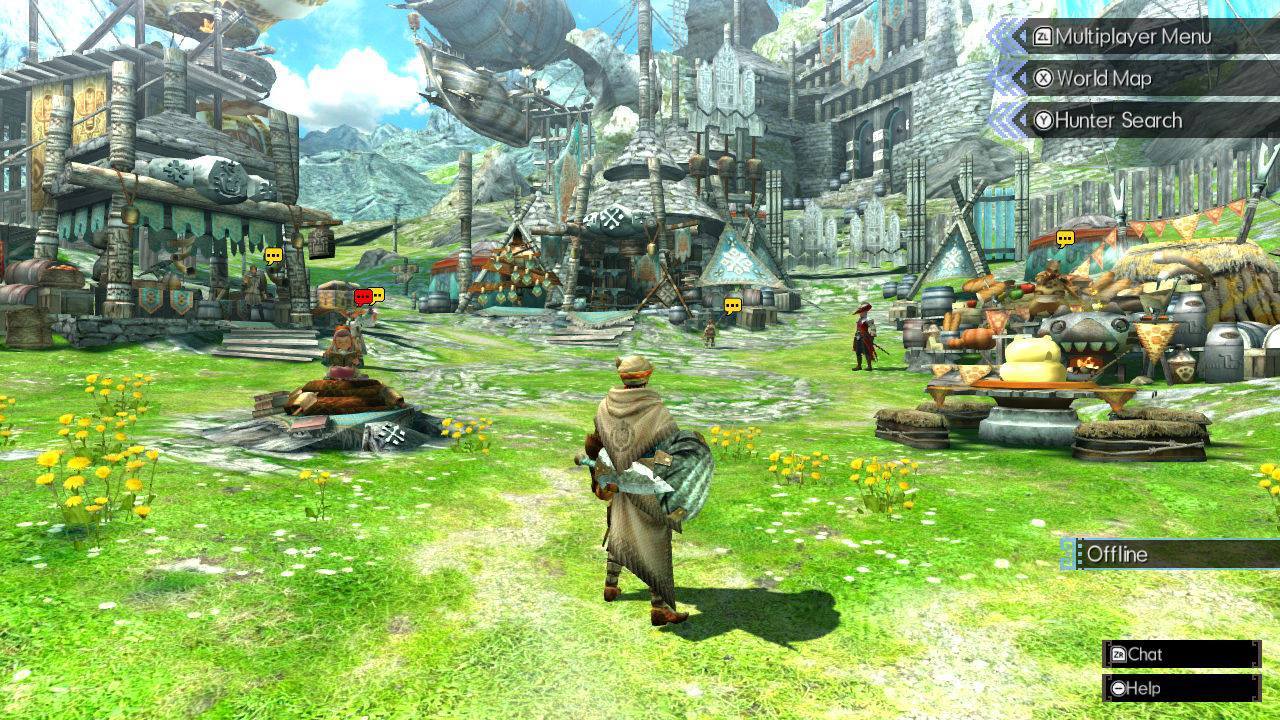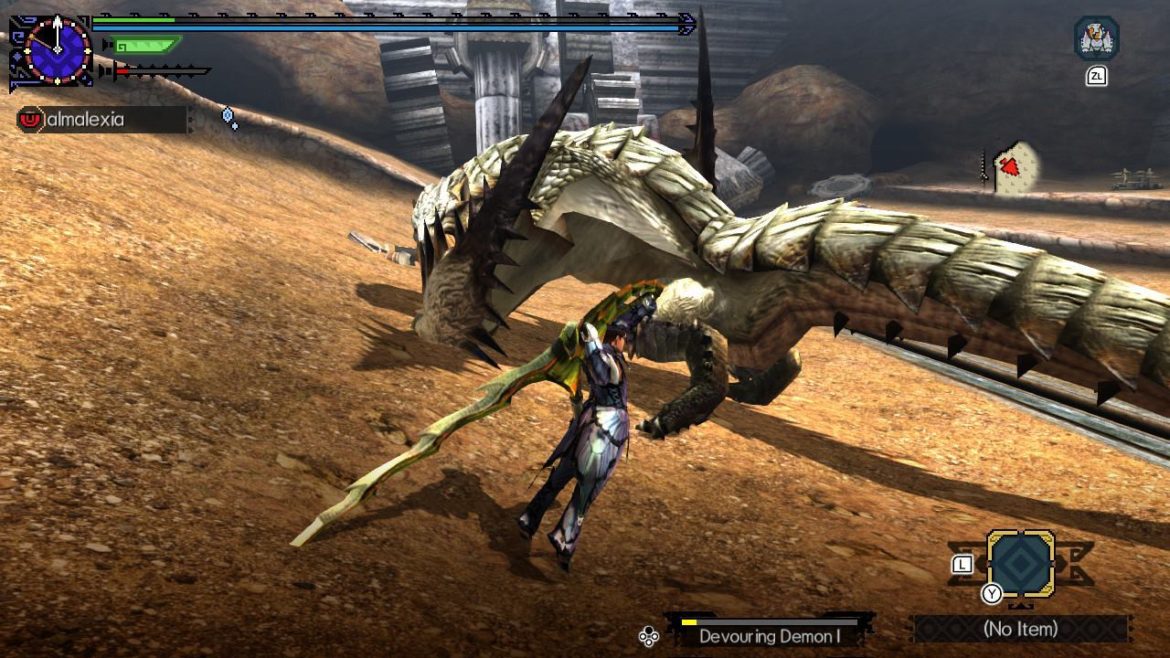With Monster Hunter: World, the famously esoteric series received a massive overhaul, including many changes that lowered the barrier to entry for new players. Dozens of quality-of-life boons not seen in previous entries–easy quest tracking, extensive tutorials, and more nuanced combat, just to name a few–have made the series a lot more accessible than it’s ever been. Monster Hunter Generations Ultimate, a Switch port of the 2016 3DS entry, has basically none of those improvements. Generations is tough as nails, unforgiving, and downright cruel at times–especially if you’re coming off of World. Even so, it makes plenty of strong cases for its less-forgiving systems and offers up some thrilling challenges for Nintendo’s hybrid console.
If you’re at all lost on the basic premise of Monster Hunter, rest assured, all you need to know is in the name. Your job is to pick out a ridiculous weapon, find some over-the-top armor, pick a beast to hunt, and bring it down. Truth be told, Generations flubs all but that last bit on some level. You’re plopped into a world packed to the gills with fantastical beasts and gargantuan creatures with little to guide you.
For starters, there are about a dozen weapons that handle in wildly different ways. The insect glaive, for instance, gives you a massive pole arm and a helpful insect that acts as a support character. If that isn’t enough to give you pause, even the standard sword and shield don’t carry the play style you might expect. Where in most games the classic fantasy gear pairing might lend itself to a sturdy, rough-and-tumble fighter able to get in close and mix up attacks and blocks, in Monster Hunter, the class works best as a support. Plus, given the prevalence of long-reach weapons, the shield is helpful, but doesn’t keep you out danger in quite the same way.











What you pick is all a matter of preference, but if you plan on running multiplayer hunts (which is highly recommended), you’ll want to coordinate your picks with your friends so you’ve got good coverage. And, if you’re new to the series, it’s definitely going to help to have someone take point and offer recommendations. Beyond that, though, multiplayer helps make fights more manageable. Enemies scale with how many companions you bring, but having specialized roles and team coordination and strategizing to fall back on when the going gets tough isn’t just about making these challenges surmountable, but about joining together with other players to revel in the carnage. Otherwise, you’ll be stuck experimenting with weapons until you find the right one or picking one and sticking with it come hell or high water.
At first, you won’t have much in the way of beasts to fight. Where Monster Hunter World throws you right into the thick of combat, Generations has a long, slow grind to the interesting foes–the idea being that you can cut your teeth on the weaklings for some time before you’re tasked with a major hunt. Unfortunately, this also means that a good chunk of the early game is a slog.
Breaking that up a bit are the Palicos, anthropomorphized cats that come in a few different flavors across the Monster Hunter games. In this iteration, they are a distinct playstyle unto themselves. As you gather Palico friends to help you along the way, you can take control of them and go on quests like you would as your human avatar, albeit with a few twists. You can’t use items, limiting certain types of tactics, but they also don’t run out of stamina and can survive extreme temperatures thanks to their fur coats. Those distinctions are enough to offer some variety as you progress and give you a chance to get a better understanding of the world.
A big part of the game is also gathering supplies from the environment to craft gear and potions, and that’s another area where Prowlers (an honorific given to Palicos that take up hunting) come in. Because they each have a distinct style, from a party support to grenadier, it’s worth it to experiment with each and see which fits for you, especially since you’ll gain bonuses for the whole clan of kitties if you level each type up. The catch, though, is that while all these extras offer more flexibility in play style, it’s in service to Generations’ proclivity for grinding through content.
In a sense, though, that’s the point. All the small hunts and gathering missions work together for the grand goal of tracking and hunting the game’s biggest and baddest monsters. Hunts are an ordeal, but the effort that precedes the triumph makes victory all the sweeter. And that’s no mere platitude. Monsters are tricky beasts that are all too happy to grind you to dust, but knowing how to disable a creature, or misdirect it with a flashbang and then also having put the work into prepping that knowledge and the supplies to match is an unparalleled experience.
Part of that stems from the fact that these bouts are grueling affairs. And across that time, you’re watching for telegraphed attacks and possible openings to unleash your own volleys. How you maneuver and jockey for that position as well as pacing out your item use to fit the battle is exhilarating. The grandiose scale of these fights is truly something to behold. And there’s something grippingly primal about them. When you’re facing down the gargantuan metallic black dragon Kushala Daora, it just wouldn’t do to have it felled in a few short minutes. That’s where Monster Hunter breaks from like-minded outings. Nowhere else will you feel quite the same level of powerlessness, and then, through perseverance and planning, reap the high of a successful hunt.
Monster Hunter Generations Ultimate game is not for the faint of heart. It is a commitment, and it’s not something that you genuinely play casually.
And that’s all that matters here. The Switch port specifically has more critters to fell than any of its predecessors—-and almost three times the current Monster Hunter World roster. That, combined with some new combat styles and an added difficulty level make it one of the strongest entries for classic fans of the series yet. Hunter Arts and styles, two features new to the original 2016 Monster Hunter Generations, have been beefed up, adding some new techniques and offering plenty of additional content for those coming back for a second round.
Monster Hunter Generations Ultimate game is not for the faint of heart. It is a commitment, and it’s not something that you genuinely play casually. You can sink dozens of hours into the game and still not get close to conquering the full set of monsters contained within. For those that are down for such an extraordinary adventure, there’s more than enough here to thrill and delight. Just know what you’re getting into. You will struggle to understand the basics if this is your first Monster Hunter game, but there are incredible rewards should you make it over every one of its initial hurdles.
